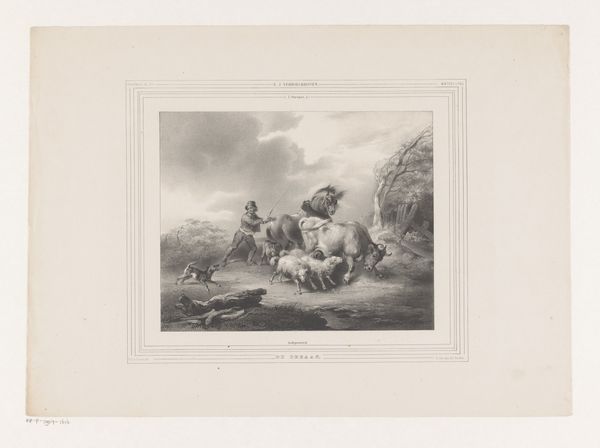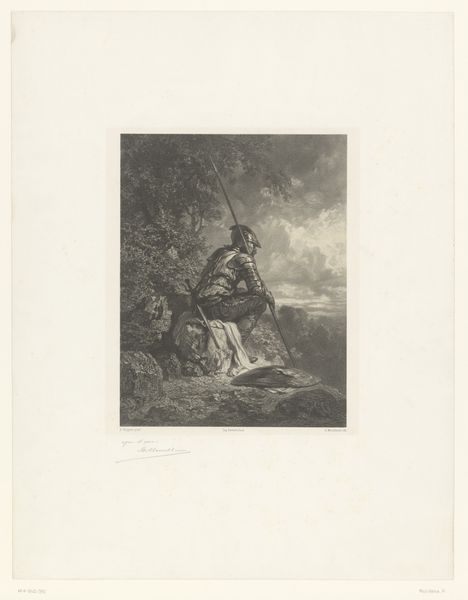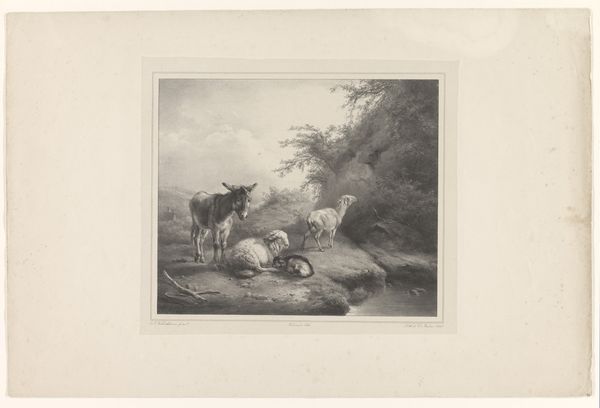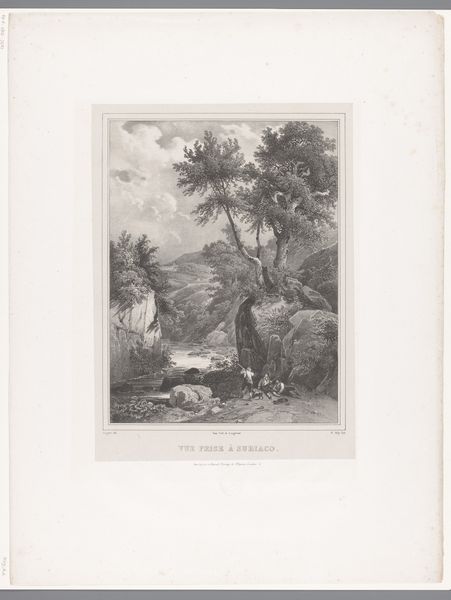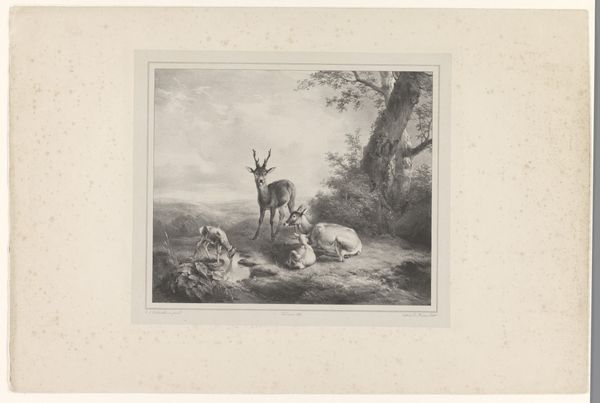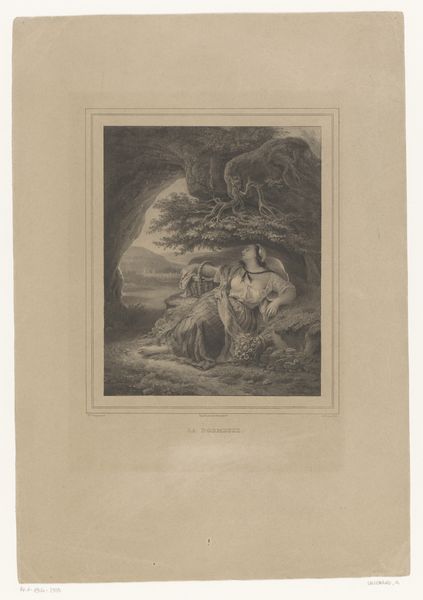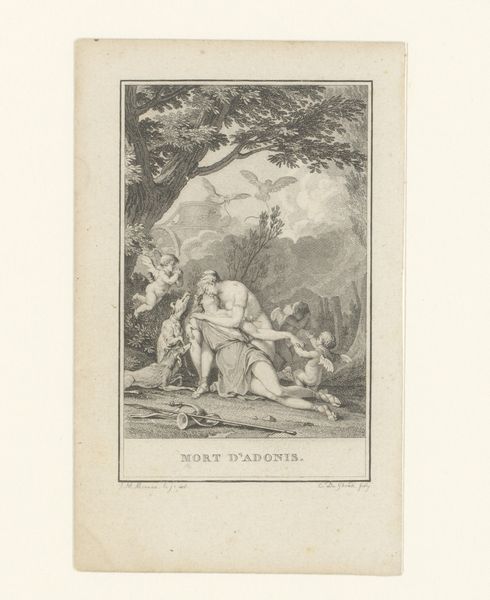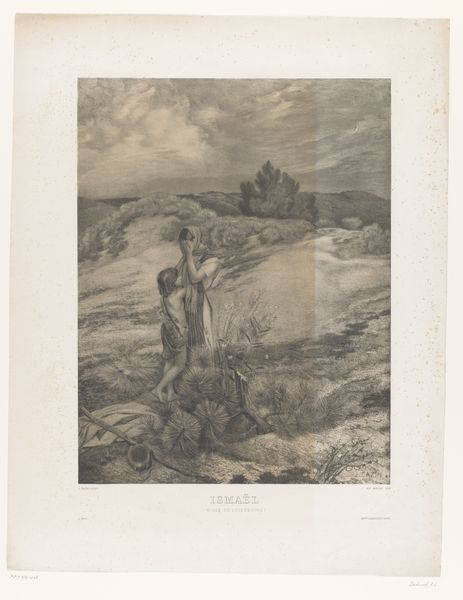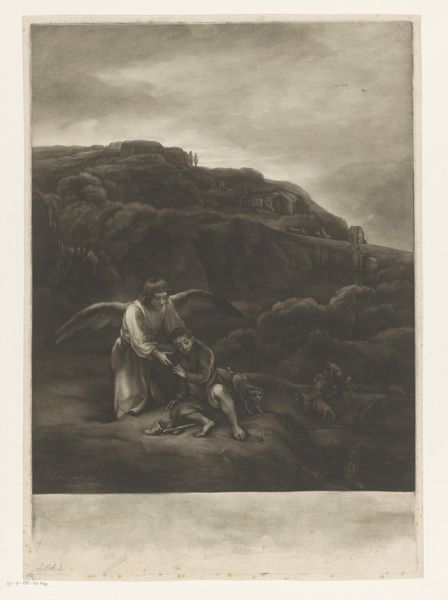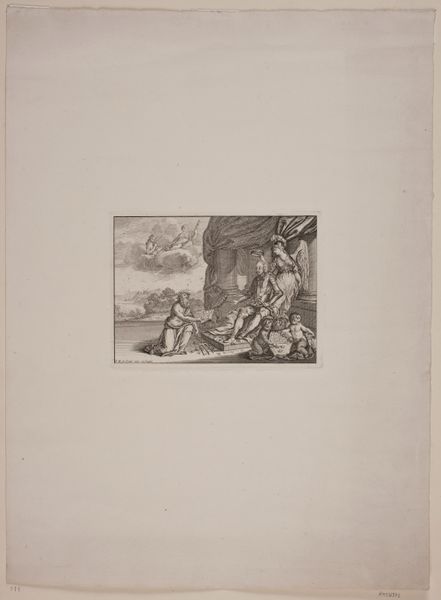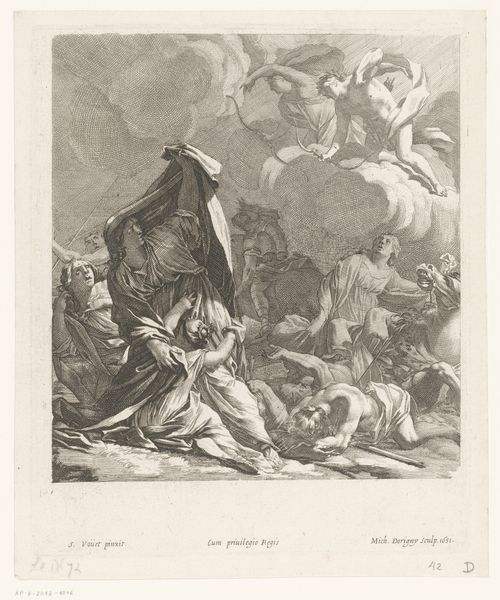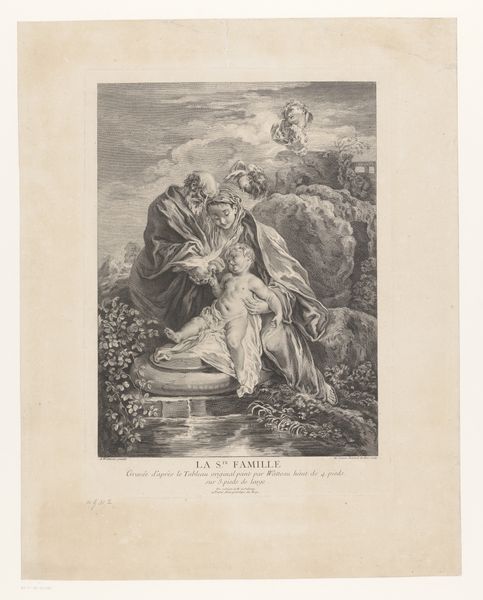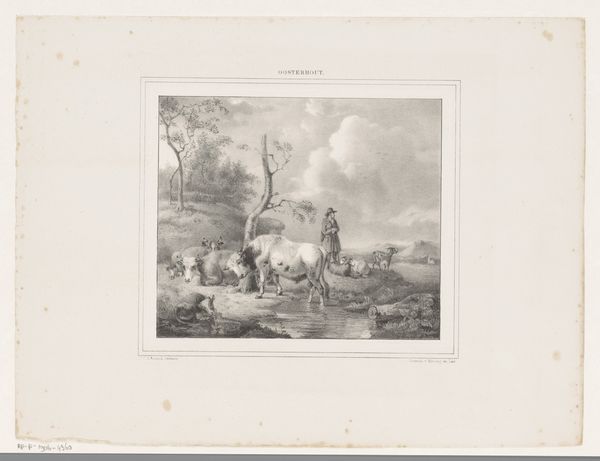
drawing, print, pencil, engraving
#
pencil drawn
#
drawing
#
light pencil work
#
photo restoration
# print
#
pencil sketch
#
dog
#
landscape
#
figuration
#
pencil drawing
#
romanticism
#
pencil
#
pencil work
#
engraving
Dimensions: height 550 mm, width 368 mm
Copyright: Rijks Museum: Open Domain
Editor: Here we have Thèodore Fourmois’ "Landscape with Man Driving Cattle", created around 1835 using pencil, print and engraving techniques. I’m immediately drawn to the atmospheric rendering of the sky, but also how the animals seem to dominate the human figure within the composition. What is your interpretation of this work? Curator: The strength of this image lies in its contrasting textures and tones achieved through the artist's technical skill. Consider the density of the cloud formations versus the comparative lightness used to describe the figures. The modulation within these tonal contrasts is how dynamism emerges and the illusion of space is constructed. Do you observe how the texture and shape of the engraved lines affects your reading? Editor: Yes, the lines in the foreground are much more defined than the background which contributes to the spatial depth. But I can't help wonder if there's a commentary about man and nature being suggested here? Curator: While interpretation is a valid pursuit, formal analysis encourages us to first attend to the visual evidence within the artwork itself. The diagonal lines converging towards a vanishing point are an illustration of visual organization; the light pencil work is juxtaposed with the dark masses of animal forms. Before searching for narrative or symbolic meaning, examine how these compositional choices contribute to its success as an image. Editor: So, by analyzing form first, you’re isolating it from any specific context, or symbolic reading to look at its inherent structure? That makes sense. Curator: Precisely. This close reading reveals how line, texture and tonal value operate dynamically within the defined borders. We gain an appreciation for how the artist constructs this image and invites visual inquiry, which provides the image meaning on its own terms.
Comments
No comments
Be the first to comment and join the conversation on the ultimate creative platform.
